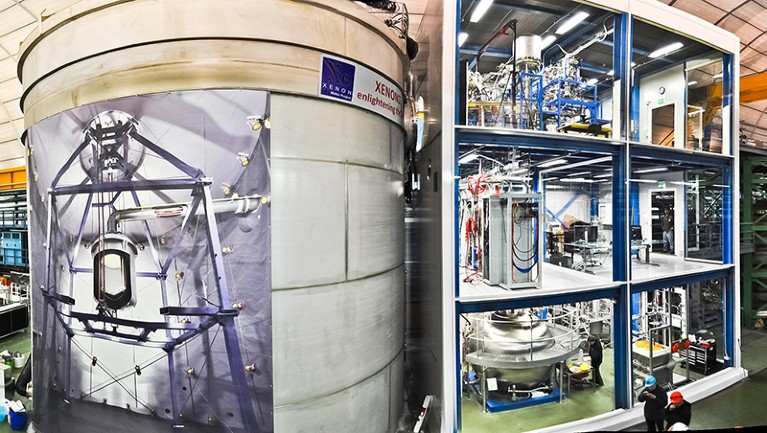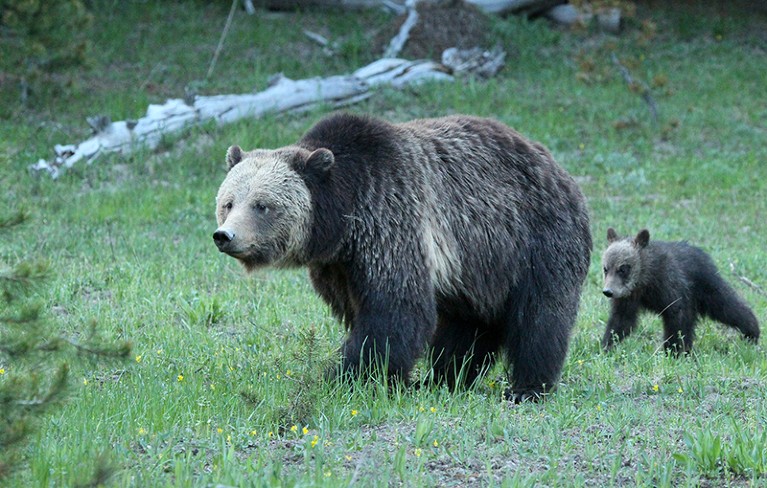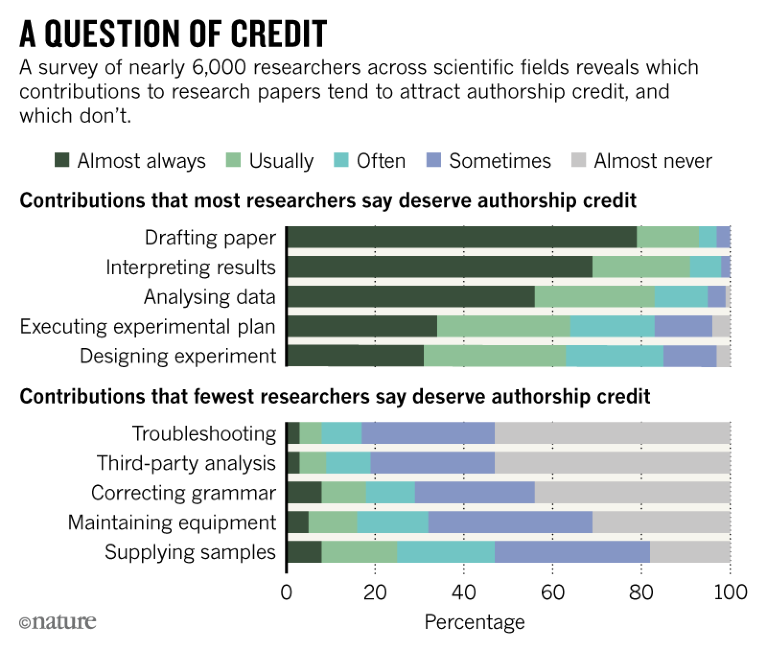RESEARCH
Dark-matter detector draws a blank The world’s largest experiment intended to detect weakly interacting massive particles (WIMPs) has come up empty-handed after collecting data for nearly a year. XENON1T is located 1.4 kilometres underground at the Gran Sasso National Laboratory in central Italy. The experiment looks out for the tiny flashes of light that should be given off when WIMPs — a popular candidate for dark matter, which is thought to make up 85% of the Universe’s matter — collide with atoms in 1,300 kilograms of cold liquid xenon. On 28 May, researchers from the XENON1T collaboration reported at seminars held simultaneously at Gran Sasso and at CERN, Europe’s particle-physics laboratory in Geneva, Switzerland, that no such flashes were detected. The data suggest that WIMPs — if they exist — interact even more weakly with ordinary matter than previously thought.

The underground XENON1T experiment should be super-sensitive to dark matter.Credit: XENON
SPACE
Cool lab launch NASA’s Cold Atom Laboratory arrived at the International Space Station on 24 May. The US$83-million mission is designed to exploit the microgravity of space to create the coldest point in the known Universe. Once installed, the lab will cool clouds of atoms to a few billionths of a degree above absolute zero so that they form a single quantum state known as a Bose–Einstein condensate. Scientists will use these clouds to probe quantum phenomena in ways that are impossible on Earth. The lab launched on 21 May from the Wallops Flight Facility in Virginia, on a supply rocket.
Instrument fail The key instrument on the latest next-generation US weather satellite is malfunctioning, the National Oceanic and Atmospheric Administration (NOAA) said on 23 May. The cooling system for the Earth-observing imager did not start up as planned after the March launch of the GOES-17 satellite. The problem affects several infrared and near-infrared detectors, rendering them too warm and degrading the quality of the data that they collect, particularly at night. This will affect the satellite’s ability to monitor storms and other weather phenomena. The agency is trying to find a workaround to restore the quality of the information.
Gravity mission A pair of US-German gravity satellites launched into space on 22 May from Vandenberg Air Force Base in California. The twin spacecraft will monitor how water moves around the planet. The Gravity Recovery and Climate Experiment Follow-On (GRACE-FO) mission picks up from the first GRACE spacecraft, which operated between 2002 and 2017 and provided crucial insights into Earth’s water cycle and other changes to the planet’s mass. The new satellites will measure shifts in surface gravity, which can occur because of processes such as ice loss from polar ice sheets or groundwater extraction for irrigation. The first scientific data from the GRACE-FO mission are expected in about seven months.
EVENTS
Nobel Prize centre The construction of the Nobel Center’s new home in Stockholm has been put on hold after a court opposed the building’s design. The planned 1.2-billion-kronor (US$137-million) bronze-clad structure is intended to host the annual Nobel prize ceremonies. But Sweden’s Land and Environment Court ruled on 22 May that the building would clash with Stockholm’s historic waterfront environment. Nobelhuset, the company that runs the centre, says it is waiting to see whether the City of Stockholm, which is developing the project, will appeal against the decision.
North Korea summit US President Donald Trump has cancelled his planned summit with North Korean leader Kim Jong-un, which had been set for 12 June in Singapore. Trump announced his decision on 24 May, citing recent remarks by a North Korean official who had described comments by US vice-president Mike Pence as “ignorant and stupid”. US and North Korean officials had been expected to discuss North Korea’s efforts to develop nuclear weapons. However, days after the cancellation, media reports suggest that both sides were still preparing for the meeting to go ahead. Also on 24 May, North Korea said that it had dismantled its only known nuclear test site, Punggye-ri. The government invited reporters from several foreign news outlets to watch the demolition but did not allow independent nuclear monitors to attend.
POLICY
The right to try The US House of Representatives has passed a controversial bill granting some critically ill people the right to access experimental treatments that do not have approval from the US Food and Drug Administration. The bill, voted on by the House on 22 May, had already passed the Senate and will now move on to President Donald Trump, who is expected to sign it into law. Several medical and patient-advocacy groups oppose the ‘right to try’ legislation, saying that it might offer people false hope and expose them to unnecessary risks.
Bear hunt approved Wyoming officials approved regulations for the hunting of up to 23 grizzly bears (Ursos arctos horribilis, pictured) in the area around Yellowstone National Park. Grizzlies in the park are still off-limits to hunters, as are those in nearby Grand Teton National Park. The decision came on 23 May, less than a year after the US government removed grizzly bears in the greater Yellowstone ecosystem from the endangered-species list. The hunt proposal, put forward by the Wyoming Game and Fish Department in February, stirred controversy over whether this population of bears had recovered from decades of hunting and habitat loss. In April, 73 scientists asked Wyoming Governor Matt Mead to halt the hunt until independent experts could review the proposal.

Grizzly bears (Ursos arctos horribilis) can now be hunted in small numbers in the area around Yellowstone National Park.Credit: Will Powers/SOPA/LightRocket/Getty
Brexit plan emerges The United Kingdom has called for a close partnership with the European Union on science and innovation after Brexit. A document published on 23 May by the UK government department overseeing negotiations to leave the EU outlines plans for a future science and innovation pact. The proposal includes access to EU-funding programmes and research infrastructure. It also calls for wider agreements on data sharing, intellectual property and the movement of researchers around the EU. The document, which will be used in discussions with EU officials, also makes it clear that the United Kingdom is willing to respect the remit of the Court of Justice of the European Union in relation to its participation in relevant EU science programmes. Prime Minister Theresa May initially said she did not want the court to have any jurisdiction in the United Kingdom after Brexit.
HEALTH
Nipah vaccine Two US biotechnology firms will receive millions of dollars to develop a vaccine against the rare but deadly Nipah virus. The World Health Organization lists the infection, transmitted to humans by fruit bats (Pteropus spp.), as a priority for research and development. On 24 May, the Coalition for Epidemic Preparedness Innovations, a multimillion-dollar initiative to develop and stockpile vaccines, announced that it would give US$25 million to Profectus BioSciences and another company, Emergent BioSolutions, which will provide technical and manufacturing support. There is currently no approved vaccine or treatment for Nipah virus, which kills about 75% of those infected. An outbreak in southern India this month has killed at least ten people.
FACILITIES
Telescope first A pioneering telescope set-up — the first optical telescope permanently dedicated to tracking the gaze of a radio telescope — launched in South Africa on 25 May. The MeerLICHT instrument (Dutch for ‘more light’) in Sutherland is linked to South Africa’s 64-dish MeerKAT radio telescope near Carnarvon and will observe for the next 5 years. By pointing the telescopes at the same part of sky at the same time, researchers hope to be able to study astronomical events in many wavelengths, which could reveal the causes of enigmatic, short-lived astronomical events such as fast radio bursts. MeerLICHT will focus on such transient events and on detecting possible sources of gravitational waves. The €1-million (US$1.2-million) project is a collaboration between Dutch, South African and UK institutions.
PEOPLE
New AAS president Australian biochemist and molecular biologist John Shine is the new president of the Australian Academy of Science (AAS). Shine, a pioneer in human gene cloning, most recently studied the genetics of inherited kidney disorders at the Garvan Institute of Medical Research in Sydney, where he was also executive director from 1990 to 2011. For the past six and a half years, he has served as chair of Australian biotechnology giant CSL, headquartered in Melbourne. Shine started his five-year term at the AAS on 24 May, replacing chemist Andrew Holmes.
TREND WATCH
Opinions about which research contributions deserve authorship credit on a paper vary markedly across scientific disciplines — and even within fields. In a survey of nearly 6,000 researchers, most said they would grant authorship for data interpretation or manuscript drafting. But nearly half would almost never or only sometimes do so for people who secured their funding. Social scientists tended to assign less value to proposing ideas than did researchers in the pure, applied and natural sciences.

Source: G. S. Patience et al. Preprint at BioRxiv at http://doi.org/cqc5 (2018)



